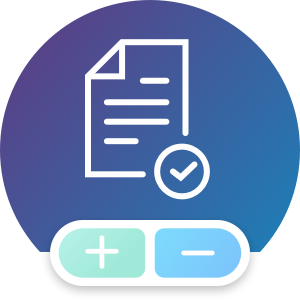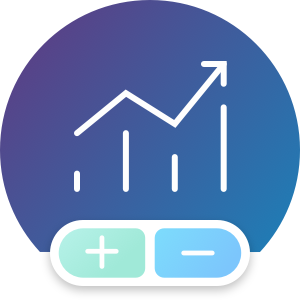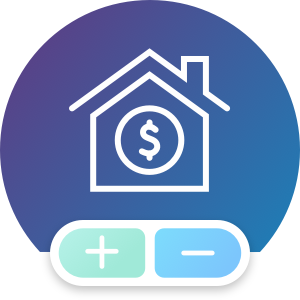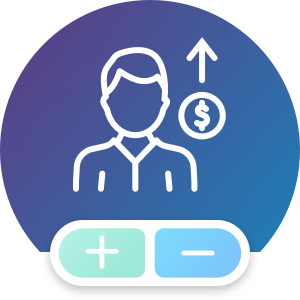- Find an office
-
File Your Taxes
 Find a Location
Find a Location -
Resolve Tax Issues
 Resolve Tax Issues
Resolve Tax IssuesResolve Tax Issues
-
Tax Resources
 See all Tax Help
See all Tax HelpTax Tools
Tax Tips & Resources
- Refund Advance
- Hiring Local Jobs!
- Tax Services
- Promotions & Coupons
- Where's My Refund
- Careers
- Search
- Contact Us
- Feedback
-
 Log in | Sign up
Log in | Sign up

JH Accounts
|
|
Oh no! We may not fully support the browser or device software you are using ! To experience our site in the best way possible, please update your browser or device software, or move over to another browser. |
Free 1099 tax calculator for self-employed taxpayers
Use this Self-Employment Tax Calculator to estimate your tax bill or refund. This tool uses the latest information from the IRS, including annual changes. To be sure you’re getting every credit, deduction and dollar you deserve this year, see a Tax Pro today.
Use this calculator to estimate your self-employment taxes. Normally these taxes are withheld by your employer. However, if you are self-employed, operate a farm or are a church employee you may owe self-employment taxes. Please note that the self-employment tax is 12.4% for the FICA portion and 2.9% for Medicare.
What is a 1099 employee?
A 1099 employee is a contractor or an independent worker or freelancer or is self-employed, rather than full-time. With more than 17 million self-employed workers (10% of the work force) in the U.S., it’s important to first understand who qualifies as being self-employed. You are self-employed if you don’t have someone telling you when to work, and you’re paid for the job, rather than for your time. Even if you’re part-time self-employed, you can still take advantage of tax benefits as if you were full-time self-employed. Self-employment income can come from many sources, but some of the most common are from gig work such as ridesharing, selling goods online, reselling goods online, contract work, freelancing, and small-business owners.
Even older adults who collect Social Security benefits, but earn income from self-employment, are required to file a tax return and pay self-employment tax every year.
How is self-employment tax calculated?
The IRS requires self-employed taxpayers to pay income tax on all of their net profit, and self-employment tax on net earnings of $400 or more. Self-employment tax is applied to 92.35% of your net earnings from self-employment. You calculate net earnings by subtracting your business expenses from the gross income of your gig or other self-employment income. You must pay Social Security tax on most earnings and Medicare tax on all earnings. Self-employed workers are taxed at 15.3% of their adjusted net profit. This percentage is a combination of Social Security (12.4%) and Medicare (2.9%) taxes, also known as FICA taxes.
When do I make tax payments to the IRS when I’m self-employed?
Self-employed taxpayers typically make quarterly estimated payments, if they expect to owe taxes when their annual tax return is filed in April. To figure your estimated tax, you must estimate your expected adjusted gross income, taxable income, taxes, deductions, and credits for the year.
You should pay estimated tax four times a year. When you don’t pay enough by the quarterly deadline, you may be charged a penalty, even if you anticipate getting a refund.
When to pay your quarterly estimated taxes
|
Quarter |
Time Period |
Deadline |
|
1st Quarter |
January 1 to March 31 |
Due April 15 |
|
2nd Quarter |
April 1 to May 31 |
Due June 15 |
|
3rd Quarter |
June 1 to August 31 |
Due September 15 |
|
4th Quarter |
September 1 to December 31 |
Due January 15 of the following year |
Note: If these due dates fall on a Saturday, Sunday, or legal holiday, the payments are due the next business day.
What does it mean to have 1099 income?
A 1099 tax form is a record for earnings. Payments of at least $600 to a person, who is not a W-2 employee for services or goods, will result in issuing of a Form 1099-NEC to the payment recipient.
Any taxpayer can receive a Form 1099, and there are many types of Forms 1099. The most common type of Form 1099 you could get is the 1099-NEC for self-employment or gig income, and 1099-K for third-party payment platforms. Or, to put it simply, income from customers who pay by credit or debit card, or by a third-party such as PayPal, Apple Pay or Google Pay.
Form 1099 types for self-employed
- Form 1099-A, Acquisition or Abandonment of Secured Property
- Form 1099-B, Proceeds from Broker and Barter Exchange Transactions
- Form 1099-C, Cancellation of Debt
- Form 1099-INT, Interest Income
- Form 1099-K, Payment Card and Third-Party Network Transactions
- Form 1099-MISC, Miscellaneous Income
- Form 1099-NEC, Nonemployee Compensation
- Form 1099-PATR, Taxable Distributions Received from Cooperatives
- Form 1099-S, Proceeds from Real Estate Transactions
- Form 1099-DA, Digital Assets
Deductions for self-employed taxpayers, businesses, contractors, and freelancers, and how to lower self-employment tax
You can take many types of deductions if you’re self-employed. You should have ongoing conversations throughout the year with your Tax Pro to understand what records you need to keep in order to deduct costs from your income taxes. You don’t want to miss out! For example:
- The Qualified Business Income deduction, or QBID. This is one of the biggest deductions. It allows you to deduct up to 20% of your qualified business income, before income taxes are determined.
- Half of the Self-Employment tax. This one allows you to claim an adjustment to income for 50% of the self-employment tax.
- Home office deduction. Be sure you understand that there are rules on the space. The office space must be an area separated from the living part of the home, and only used for business purposes. It cannot be a room in your home that’s also a guest bedroom, or a part of your kitchen.
- Business-related vehicle mileage. You can take the standard mileage deduction. Or, you can deduct the expenses paid to operate and maintain your vehicle during the year, which include gas, oil, repairs, general maintenance, registration, and monthly payments. In both cases, you must keep track of total mileage for the year and business mileage for the year.
- Health insurance premiums deduction. If you don’t have health insurance available through an employer (or your spouse’s employer), you can deduct all of your and your family’s health and dental premiums as an adjustment to income. This means without itemizing deductions.
- Meals. You can deduct meals if you’re traveling for business, or if you’re entertaining someone for your business. You can’t deduct all entertainment expenses, but you can deduct a portion of the cost of meals. You can either deduct 50% of the meal’s actual cost when you kept your receipts, or 50% of the standard meal allowance when you kept records of the time, place, and business purpose of your travel, but not your actual meal receipts.
- Marketing and advertising expenses. The costs you incur for marketing your self-employed business to the world can be deducted, including social and digital ads, as well as direct-mail pieces and traditional print media, such as flyers, pamphlets, mailing signs, and even business cards.
- Business supplies and materials. Items you use during the year for your business, like paper, electronics, professional instruments, books, equipment, and more, qualify in this category.
And you may be able to deduct much more. Just be sure to keep good records of these items in order for them to be accurately and correctly deducted. Not sure? Bring all your records with you when you meet with your Tax Pro, to determine what you might be able to deduct on your tax return.
Use this calculator to estimate your self-employment taxes. Normally, these taxes are withheld by your employer. However, if you are self-employed, operate a farm, or are a church employee, you may owe self-employment taxes. Please note that the self-employment tax rate is 12.4% for the Social Security portion and 2.9% for Medicare.
Information and interactive calculators are made available to you as self-help tools for your independent use and are not intended to provide investment advice. We cannot and do not guarantee their applicability or accuracy in regards to your individual circumstances. All examples are hypothetical and are for illustrative purposes. We encourage you to seek personalized advice from qualified professionals regarding all personal finance issues.
How to calculate your tax refund
Grab your tax documents and be ready to answer questions about your current income. Visit your neighborhood Tax Pro to better serve you. We’re open nights and weekends.
-

1040
Basic income tax calculator
-

EITC
Earned Income Tax Credit calculator
-

Estate tax
Inheritance tax calculator
-

Self-employed
Social Security & Medicare tax calculator
Learn more about self-employed tax deductions

Home Business and Office Tax Deductions
See if you qualify for any tax breaks for operating a business from your home.

Self Employed? How to File a Self Employment Tax Return
Are you self-employed? Here's how to determine if you are, what you can deduct from your self-employment income, what IRS forms you may need to use, and how self-employment affects your tax return.

Side hustle tax 2025: Do I have to pay taxes on a side hustle?
More Americans are relying on side-gig earnings. And if you’ve never had a side hustle or second job before, understanding how this income factors into your taxes can be confusing. As a part of our Deductions@Work® series, here’s everything you need to know about how a second job or side gig affects your taxes.
More Results
Biggest Refund Guarantee
FEDERAL RETURNS ONLY. If you are entitled to a refund larger than we initially determined, we’ll refund the tax preparation fees paid for that filed return (other product and service fees excluded) and give you an additional $100. You must submit a valid claim and file an amended return with Jackson Hewitt by the annual IRS deadline for the year of your tax return. Same tax facts must apply. Terms, restrictions, and conditions apply. Most offices are independently owned and operated.
